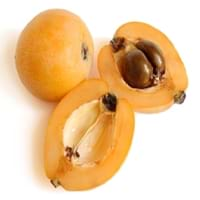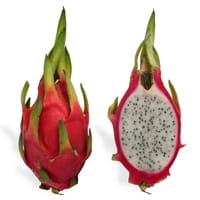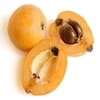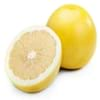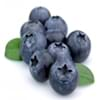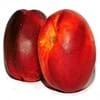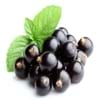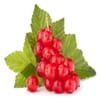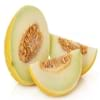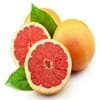Health Benefits
Cancer prevention, Heart care, Reduces nervous tension, Reduces blood circulation problems, Reduces stress, Regulation of heart rate, Strengthening of bones
Anti-oxidant properties, Anti-aging benefits, Maintains healthy cholesterol level, Weight loss properties
General Benefits
Anti-inflammatory properties, Controls blood pressure, Digestive aid, Eye care, Helps in weight loss, Improves eye vision, Maintains healthy cholesterol level, Strengthens bones
Helps in weight loss, Suppresses Arthritis
Skin Benefits
Anti-aging benefits, Reduces wrinkles, Treatment of dark spots, Treatment of skin diseases
Anti-aging benefits, Heals sunburn, Treatment of acne
Hair Benefits
Protects hair
Treatment of colored hair
Allergy Symptoms
Diarrhea, Itching of mouth, Nasal congestion, Sneezing, Swelling of face, Watery eyes
NA
Side Effects
Allergic reaction
NA
Lactating Women
Yes
Not Available
Best Time to Eat
Along with meal, As a snack in the late afternoon, Don't consume at night and before bed, Morning time (before lunch)
Any time except an hour after meal, Don't consume at night and before bed
Vitamin A (Retinol)
Not Available
Vitamin B6 (Pyridoxin)
Not Available
Vitamin B9 (Folic acid)
Not Available
Vitamin C (Ascorbic Acid)
Not Available
Phytosterol
Not Available
Calories in Fresh Fruit with Peel
Calories in Fresh Fruit without Peel
Not Available
Not Available
Calories in Frozen Form
Not Available
Not Available
Calories in Dried Form
Not Available
Not Available
Calories in Canned Form
Not Available
Calories in Juice
Not Available
Calories in Jam
Not Available
Type
Tree fruit, Tropical
Berry, Citrus, Fruit vegetable, Melon, Tree fruit, Tropical
Season
Winter
Early fall, Summer
Varieties
Ahdar, Ahmar, Asfar, Blush, Champagne, Early Red, Eulalia, Fire Ball, Golden Red, Golden Yellow, Oliver, Thales, Thames Pride, Victor and Wolfe
Selenicereus megalanthus and Hylocereus polyrhizus
Color
Orange, Yellow
Magenta, Pink
Inside Color
Orange
White
Origin
China
Central America, Mexico
Soil Type
Clay, Loam, Sand, Well-drained
NA
Climatic Conditions
Warm to hot climate
NA
Facts about
- Loquats are used in plum wine manufacturing.
- Dried leaves of loquat are used to make herbal tea.
- The seeds of loquat are slightly toxic & the symptoms of intoxication are nausea, vomiting & shortness of breath.
NA
Other Countries
Brazil, Chile, China, Egypt, Israel, Italy, Morocco, Pakistan, Portugal, Spain, Turkey
NA
Top Exporter
Spain
Vietnam
Botanical Name
Eriobotrya japonica
Hylocereus undatus
Synonym
Crataegus bibas or Mespilus japonica or Photinia japonica
Pitaya, Red Pitahaya, Night blooming Cereus, Strawberry Pear, Belle of the Night, Conderella plant
Subkingdom
Tracheobionta
Tracheobionta
Division
Magnoliophyta
NA
Class
Magnoliopsida
Not Available
Subclass
Rosidae
Liliidae
Order
Rosales
Caryophyllales
Family
Rosaceae
Cactaceae
Genus
Eriobotrya
Hylocereus
Species
E. japonica
H. undatus
Generic Group
Rose
Cactus
Compare Loquat and Dragonfruit
It is important compare Loquat and Dragonfruit as both the fruits have a different nutritional value. Their comparison can be done on the basis of their vitamin and mineral content, calories, benefits as well as characteristics, making it easier for us to choose the best fruit for our diet. Their general health benefits are as follows:
Loquat Benefits: anti-inflammatory properties, controls blood pressure, digestive aid, eye care, helps in weight loss, improves eye vision, maintains healthy cholesterol level and strengthens bones.
Dragonfruit Benefits: helps in weight loss and suppresses arthritis.
Fruits are also used as a remedy for various hair problems. The hair benefits of Loquat are: protects hair and hair benefits of Dragonfruit are: treatment of colored hair. Some fruits are known to cause allergic reactions. The allergy symptoms of first fruit are: diarrhea, itching of mouth, nasal congestion, sneezing, swelling of face and watery eyes and the symptoms of second fruit are: na. Get sorted Loquat vs Dragonfruit comparison with the help of fruit comparison tool by fruitvs.com.
